‘Favorites: Top Judy Theories’ is now available on Audio, read by author John Bernardy, exclusively for our Patreon supporters. For just $3 a month you will have access to our full library of Audio content, plus three new uploads every week. To sign up visit our Patreon page: https://www.patreon.com/25YL
Here at 25YLSite, we handle a lot of heavy lifting. Analysis, interpretation, deep discussion, introspective interviews…you name it, we’ve got it. “Favorites” takes a lighter approach to the material we normally cover. Each week, we will take you through a list of favorites—whether it’s moments, scenes, episodes, characters, lines of dialogue, whatever!—in bite-sized articles perfect for your lunch break, a dull commute, or anywhere you need to take a Moment of Zen. So, sit back and enjoy this week’s offering: John Bernardy’s favorite theories about Judy.
Here’s literally all we actually know about the character of Twin Peaks’ Judy:
- Phillip Jeffries, when he appears in Fire Walk With Me (on February 16, 1989), says he’s not gonna talk about Judy. In fact, they’re not gonna talk about Judy at all; they’re gonna keep her out of it. In Part 15, however, Jeffries says DoppelCooper has met her before.
- Per Bob Engels in various interviews, Judy was going to be Josie Packard’s twin sister.
- Per Gordon Cole in Part 17, Judy is an extreme negative force (not evil) known as Jow Day, and there’s a plan made by Gordon, Cooper and Briggs to find (not kill) it.
- Per Tamara Preston in The Final Dossier, Judy is a Sumerian utukku demon known as Joudy, that—when mating with a male utukku—can bring about “the end of the world as we know it.”
Yet, in all of these instances, the name Judy is never actually attributed to a character. Hence we have the smorgasbord of theories revolving around the identity of Judy. Here are some of my favorites:
ANOTHER VICTIM OF BOB
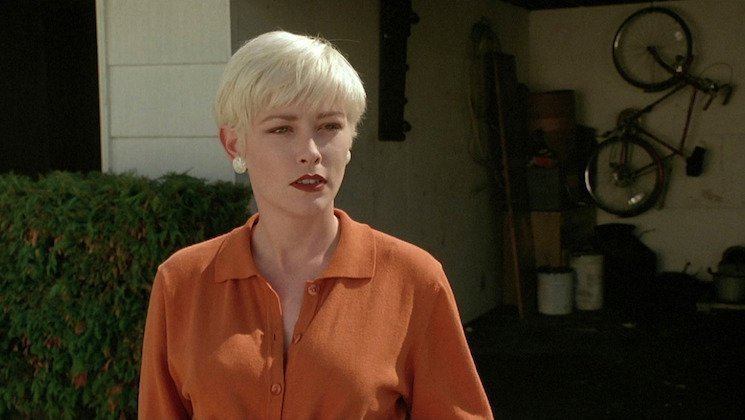
This one’s a pre-Season 3 theory, and it’s officially outdated, but there’s a simplicity to it that I love:
- The Laura Palmer case is what led to Dale Cooper’s disappearance.
- The Teresa Banks case is what led to Chet Desmond’s disappearance.
- The Judy case is what led to Phillip Jeffries’ disappearance.
This definitely fits well with the formula that Judy is Josie’s twin sister, so it should be an automatic sign to throw it out, but it would also be the first instance of a set of three in Twin Peaks media, and we know well that Season 3 was all about themes of three. Considering where I think the state of reality’s gone in Season 3, I find it noteworthy that this was Twin Peaks’ instinctual direction as early as 1992.
THE EVIL THAT WOMEN DO
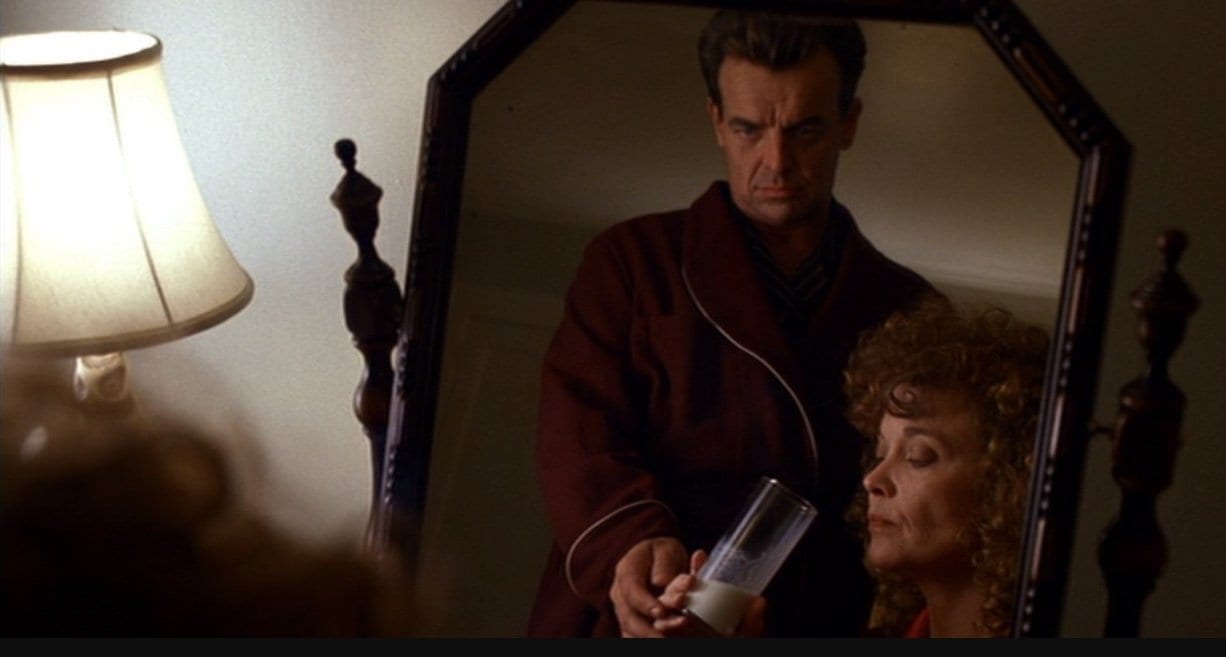
Sarah Palmer as a host to Judy makes sense to me, as it’s the same formula as Leland Palmer being the host of BOB. There’s a simplistic balance to it that I could see being likely, but if you stretch out Albert’s line about BOB being the evil that men do, you could say the same for Sarah.
If BOB was personification of Leland’s most negative actions, Judy could be a personification of Sarah’s most negative actions. Sarah Palmer could have created Judy, as I’ve said before in a magical-realism way and Brien Allen has said in a more tied-to-the-plot kind of way.
THE WHITE HORSE
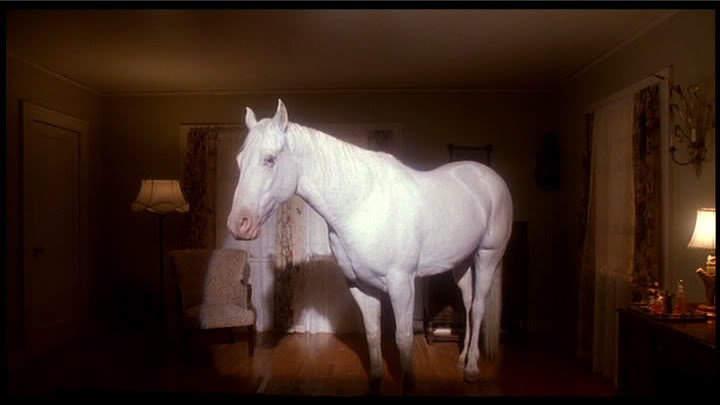
Laura Stewart explains here what looking away means in regards to Sarah Palmer, and she also brings up the white horse specifically in regards to “the horse is the white of the eyes.”
Lynch loves his symbols. I refer you to the traffic light, Bang Bang Bar sign, and ceiling fan, for just a few. The white horse surfaces as well, usually around extremely negative circumstances. And Gordon says Judy is an extreme negative force. If the horse really does symbolize looking away as the Part 8 poem suggests, it would help immensely in explaining why we never see Judy being officially noted on screen or in the credits. Even Naido and Ruby were credited with their names despite them never being said aloud.
The horse is what we’re looking at while Judy is just off to the side of the camera shot. Classic misdirection, in the most art-house way possible.
MAJOR BRIGGS
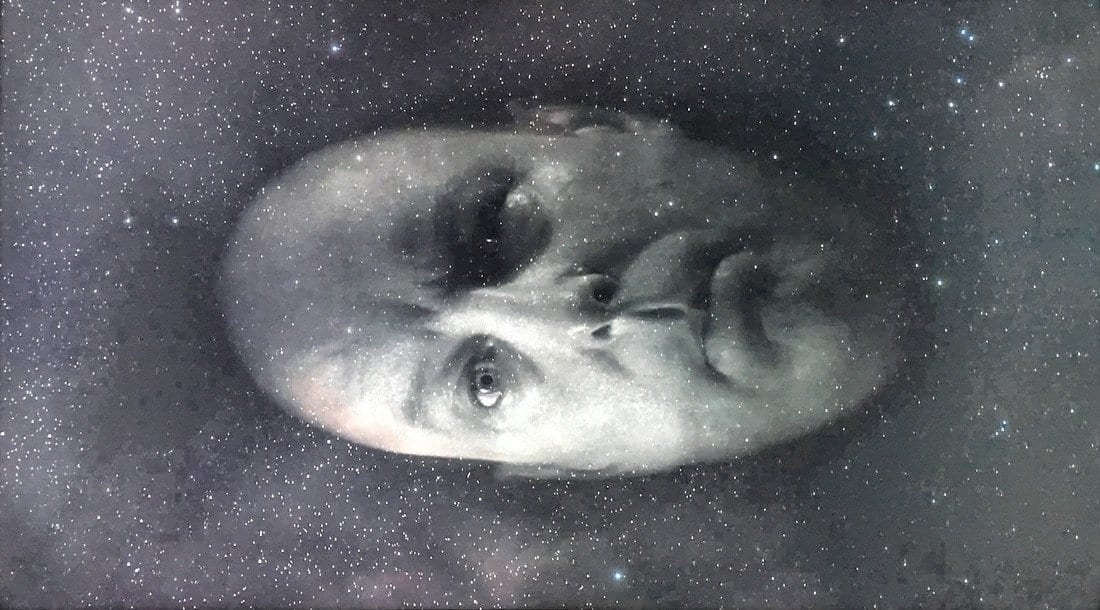
During the run of Season 3, fans were regularly saying that Judy was Gordon Cole and Phillip Jeffries’ code name for Major Garland Briggs, and even today there are reddit users who suggest the Judy that DoppelCooper is trying to find is the head of Major Briggs in the White Lodge.
Garland Briggs himself even says “Judy Garland?” when under the influence of haloperidol, as he responds to Dale Cooper calling Briggs by name. Earlier in Season 2, Briggs was abducted by the same force as the Log Lady, per their themed tattoos, and they are both tied to the forces of positive good, but Gordon is the one who coined Judy as the ultimate negative force and he’s supposed to remember the unofficial version, so it could be that Cole is “far away” himself with that detail. Or Judy’s just a red herring used as a lure to trap DoppelCooper.
This is the biggest stretch to name Briggs as Judy’s identity, but ‘Garland’ is a strong connection based on Lynch’s proclivity for referencing Wizard of Oz. And then there’s another under-the-surface meta-story relating to Judy Garland…I’ve heard it said that her treatment during the making of Wizard of Oz was less than stellar, and at minimum adjacent to abuse. If a horse can be a symbol of Judy, can Garland Briggs’ first name be imbued with the pain of a girl that was masked over by one of the most important fairy tales in all of film? Was Briggs then a reminder of pain under the surface, much as he was a reminder to Dale about the Blue Rose?
EXPERIMENT MODEL
Experiment, the egg spewing creature in Part 8, can be a personified Black Lodge much in the same way that BOB could be the personified evil that men do. It could also be a mature utukku demon—as we saw explained in The Final Dossier—laying eggs in our reality. There are regular theories that the frogbug hatched from one of those eggs is an immature Jumping Man. Considering “man” is right in its name, that could be the male utukku, making that comparable to Final Dossier’s Ba’al or Beelzebub. Experiment Model, as seen in the glass box in Part 2, could be the female utukku, making it comparable to Joudy.
I’ve made a case that Experiment Model goes from that glass box into Sarah Palmer by way of the glitching television, and that means combined with Sarah’s frogbug they form that smiling creature within Sarah. The hybridized creature inside Sarah makes the most sense to be the creature that can “end the world as we know it” purported in The Final Dossier. And that creature could be the entity that shifts the world to its more unrecognizable conclusion in Part 18, ending the world “as we knew it” and giving us a brand new one. It’s a strong case that Experiment Model is the literal Joudy from Final Dossier, but I still think that’s only one way to read things.
Laura Palmer’s Doppelganger
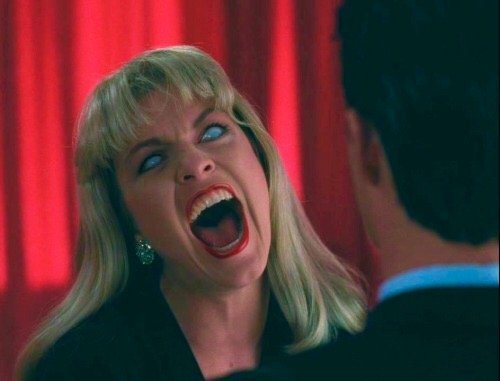
In the “truck you” scene of Part 14, the creature inside Sarah tells the bartender “sure is a mystery, huh?” with an intonation just like Laura Palmer. Gisela Fleischer made a case that its hand is Laura’s from a scene in Fire Walk With Me, and the smile is definitely reminiscent as well. That creature could quite possibly be Judy, and it could also be Laura Palmer’s doppelganger. And those two could just as easily be one and the same.
Much as Diane takes on the name Linda and Laura takes on the name Carrie in Part 18, I can get behind the idea that Laura’s doppelganger, unseen since the Season 2 finale, could take the name Judy.
While Laura is related to the golden orb, it’s possible that her doppelganger is related to an ultimate negative force. Doppelgangers, after all, are essentially the worst impulses of a person. In a season which focuses on Dale Cooper’s need to assimilate his doppelganger, it would make sense that the entity inside Sarah Palmer could be the doppelganger of a dead girl in need of a body to enact its revenge upon the world.
So there we have it. So many plausible Judy identities, and I didn’t even name them all. Which one is your favorite?

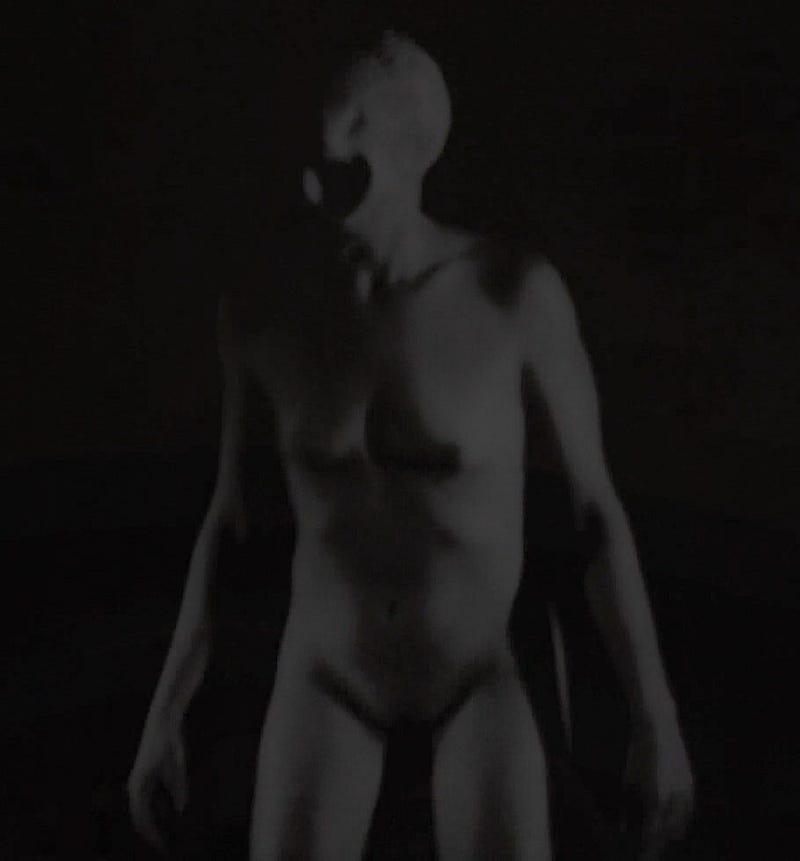


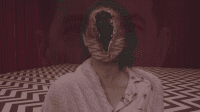

i prefer the outdated theory that Judy is the case that leads to Phillip Jeffries’ disappearance. the whole Jowday retcon is something i’d like to assign to some kind of temporary alternate reality caused by Cooper’s messing with the timeline. maybe Jeffries doesn’t want to talk about Judy because where he’s been he’s seen enough to know she’s the smallest part of the story but in the Jowday universe she’s the reason the Blue Rose task force even exists.
Great theories. I tend to think that Lynch wants to reflect the reality (not very Lynchian!) that evil isn’t a well defined single entity or force. That evil appears in places you least expect it and means very different things to different people. We all struggle to define evil in our lives but – partly because there are no ground rules on how we perceive or define evil – we are all convinced that our interpretation is the correct one. Season 3 deliberately added to that definition & interpretative confusion.
I would like to know about the young lady who was walking with her boy friend and when she got in bed and fell asleep that bug went in her mouth and she swallowed it. We never saw her again.
According to Final Dossier, she’s extremely likely to be Sarah Palmer.
Lynch made his spokeswoman The Log Lady say that “Laura is the one” twice and that TP is the “story of many”, it’s not Cooper’s story at all and the shodow-self thing is something believed by Frost only, who knows his co-Author well enough to state that “David’s not psychological, he doesn’t even want to hear about it”, so it’s fair to exclude any Cooper-centric or psychanalytical approach on behalf on the One who’s got the final word on the work, Lynch being also the Director (which Frost is not).
This said, Jowday is both an entity and a force, the Threshold where someone dwells, briefly or forever.
“No knock, no doorbell”…”Jow” is a scottish word first used since the year 1515 AD to mean both “to knock” and “the toll of a bell”.
Remember “little Denny Craig – when the bell rang, he never got up” and remember the doorway trespassed by a Little Boy (the second atomic bomb within the Manhattan Project after the one used in the Trinity Test) causing a reflection and Evil, off “Inland Empire”.
It’s valid to decide Lynch’s intrrpretation is your primary one, but I think Frost’s interpretation is still baked into the script and therefore still described in what Lynch directed even if it’s not Lynch’s conclusion (Lynch does a good job respecting the source material even when he does things his way, like how he still had Dale looking into the mirror at Bob even though he didn’t like that season 2 ending).
I think the Season 3 Script is “the one” and there’s a Lynch interpretation and a Frost interpretation. And where I think the most Twin Peaks is is when they meet in the middle. I’m not intersted in discounting Lynch’s or Frost’s interpretation as one being more real than the other. You should check out my Navigating Two Worlds 5-parter here where I really go into that.
https://25yearslatersite.com/2019/01/07/twin-peaks-navigating-between-two-worlds-part-1-of-5-electricity-nexus-22a/
Judy was Sarah Palmer from the start. Bob was Leland and Laura was the good force they were trying to destroy Cooper and Laura are the light. That’s why they are the last two seen in the series. Laura hears Judy or Sarah’s voice and she knows they are doomed to keep reliving it because Cooper brought them to another plane of existence. The Palmer house is like the black lodge but it’s in out plane of existence. Didn’t u ever notice that everyone was creeped out when they were to the Palmer except Cooper and the doctor. Two forces of good. I never read any of the books so I don’t know about a lot of the other things. That bug crawled in Sarah Palmer after the trinity experiment and that was Judy. She had just expelled BOB and went to find a host. Bob seemed this host out while being Leland which I assume was Bob when they got married.
After watching Twin Peaks: The Return, I had a lot of questions, and since it’s a more recent release, or perhaps because it is so long and convoluted, there isn’t really an analysis I’ve read online that makes sense of the series the way I’ve been able to make sense of some of Lynch’s previous work, including Lost Highway and Mullholland Drive. But after sitting and thinking about it for a long time, I feel I’ve come up with at least an idea of where to dig.
The story was so complicated that I felt I had to search online just for clarification on a few points, and also because I watched it illegally and so completely missed part of an episode because I couldn’t find it anywhere online. But after reading a few pieces giving some summary information, I began to think about Lynch’s dream logic as it pertained to the piece. I feel a lot of the piece resembles Mullholland Drive – especially the scenes involving Dougie and his family, and especially since those both feature Naomi Watts. The way in which the Dream World is reflected through behavior and lighting is very similar in both movies. But thinking more about the logic of the dream, I just couldn’t get past the dense symbolism: the exchange of coffee cups, the red door and the red room, the Double R and Rio Rancho, the scenes of MacLachlan driving with different women over the same stretch of highway… it was all too much to process at first. But I began to think about the meta-ness of it all, if you will, and, bear with me, the way in which we, the audience, have become involved in the script, in the sense of a detective. Once Agent Cooper was called to the realm of the Black Lodge, he relinquished his duties as a detective, possibly to the audience. Now, we have become actively involved in the mystery; as David Lynch urges us to ask of ourselves, via the character of Gordon Cole, “who is the dreamer?” This, ultimately, is the question Agent Cooper, once he has “become” Richard near the end of the movie, asks of himself: is this really his reality, or is he just a character in someone’s sick story, destined to a complicated and unhappy end? And of course, this is the reality. Agent Cooper is the sick, gimpy plaything of David Lynch, forced to act out a stroke, rape the women he loves, and much else for his and our benefit; and if Lynch is perhaps the aforementioned “Judy,” the God who controls the destiny of Twin Peaks, then the audience are the characters in the Black Lodge, feasting on the “garmonbozia” of the actors’ and actresses’ distress and trauma. This read is supported by a scene near the beginning of the show, where a couple having sex in front of what looks like a staring camera (the portal behind the black box) is brutally annihilated, (possibly?) for the sick pleasure of the audience; this “sex and violence” trope has been used by Lynch all the way back since Blue Velvet, and it seems especially important in Twin Peaks, a series founded upon the idea that a teen girl was raped and brutally murdered, and that everyone, even perhaps vicariously or distantly, was involved, in much the way that Lynch’s audience involves themselves with morbidity in order to experience a sick sort of pleasure. The idea that “electricity” exists as a portal to another dimension also reminded me of the fact that I was watching this story on television, or at the very least on some device with the help of electricity… watching Cooper through the portal. Another scene that got me thinking was the bit during Episode 8 where the Woodsmen are running around outside the convenience store; it almost reminded me of a movie set in fast forward, with set designers walking around fixing it up. It’s as if Cooper has become aware that his life is just a movie, and he exists only for the sick pleasure of the audience. When he is in the Red Room, it is if he is on a talk show, on a stage surrounded by curtains – the curtains represent the physical boundaries of his existence. Just beyond these boundaries, the audience that Cooper can only imagine watches him and lifts no fingers to help. And the phrase near the end of the series, “see you at the curtain call,” suggests that his story will be over when the credits roll.
The little girl who loved down the lane is played by Joudai Foster. Just saying!
Is it?